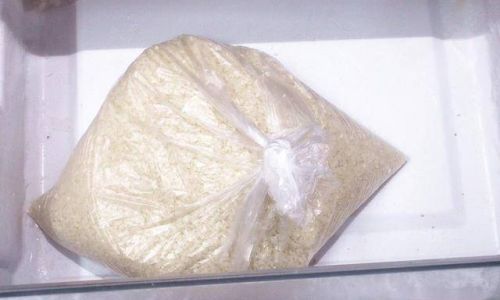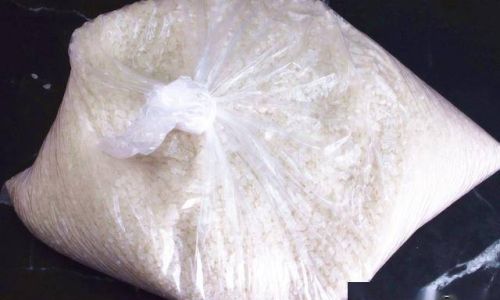Storing rice properly is crucial to ensuring its freshness, taste, and nutritional value are preserved over time. Rice, being a staple food for many cultures around the world, is often bought in bulk due to its long shelf life when stored correctly. However, improper storage can lead to spoilage, characterized by the development of moisture, mold, insects, or an off odor. This guide will delve into the various methods and best practices for storing rice to prevent spoilage, ensuring you always have a reliable supply of high-quality rice at hand.
Understanding Rice and Its Storage Needs
Before diving into storage techniques, it’s essential to understand the basic properties of rice that influence its shelf life. Rice is primarily composed of carbohydrates and contains a low moisture content, which makes it relatively stable against microbial growth. However, several factors can compromise its quality:
- Moisture Content: Rice should have a moisture content of around 12-14% for optimal storage. Higher moisture levels can promote the growth of mold and bacteria.
- Temperature: Warm temperatures accelerate chemical reactions that can degrade the quality of rice over time.
- Oxygen Exposure: Oxygen can lead to oxidation, which affects the taste and color of rice.
- Pests and Insects: Weevils and other insects can infest rice, especially if it’s stored in conditions conducive to their growth.
Choosing the Right Packaging
The first step in preventing rice spoilage is selecting the appropriate packaging material. Here are some options:
- Original Packaging: If you buy rice in bulk, keeping it in its original, airtight packaging can be effective. Manufacturers often use packaging designed to maintain freshness.
- Airtight Containers: Glass jars, stainless steel containers, or airtight plastic containers are excellent choices. Ensure they have a tight-fitting lid to minimize oxygen exposure.
- Vacuum-Sealed Bags: Vacuum-sealing rice removes oxygen, slowing down the oxidation process and extending shelf life.
- Resealable Bags: If you prefer using bags, choose those with resealable zippers to keep air out once the bag is opened.
Proper Storage Conditions
Once you have the right packaging, the next step is to create an environment conducive to long-term storage.

- Cool, Dry Place: Store rice in a cool, dry area away from direct sunlight and heat sources like ovens or radiators. Temperatures between 40-60°F (4-16°C) are ideal.
- Humidity Control: High humidity can cause rice to absorb moisture, leading to spoilage. If possible, use a dehumidifier in the storage area or place rice in containers with desiccant packets.
- Away from Pests: Keep rice away from areas where pests are likely to be found, such as pet food storage or garbage bins. Sealing containers tightly can also help prevent infestation.
Long-Term Storage Techniques
For those looking to store rice for extended periods, such as for emergencies or long-term food supply, additional steps are necessary.
- Oxygen Absorbers: Using oxygen absorbers inside airtight containers can significantly extend the shelf life of rice. These small packets absorb oxygen, creating an anaerobic environment that inhibits microbial growth.
- Food-Grade Silica Gel: Similar to oxygen absorbers, food-grade silica gel packets can help control moisture inside storage containers.
- Mylar Bags with Oxygen Absorbers: Mylar bags are a durable, moisture-resistant alternative to traditional packaging. When combined with oxygen absorbers, they provide an excellent barrier against air and moisture, making them ideal for long-term storage.
- Freezing Rice: While not typically necessary for standard storage, freezing rice can be an option for preserving cooked rice. Place cooked rice in airtight containers or freezer bags and store it in the freezer for up to a month.
Handling and Rotation
Proper handling and rotation practices can further ensure the quality of your stored rice.

- First-In, First-Out (FIFO): Always follow the FIFO principle when storing and using rice. This means using the oldest batch first to ensure nothing sits in storage for too long.
- Clean Hands and Utensils: Always wash your hands and use clean utensils when handling rice to prevent contamination.
- Inspect Regularly: Periodically inspect stored rice for signs of moisture, mold, or insects. If any issues are found, discard the affected rice immediately to prevent spread.
Identifying Signs of Spoilage
Knowing how to identify spoiled rice is crucial for preventing foodborne illness. Here are some signs to look for:
- Odd Odor: Fresh rice has a mild, nutty aroma. If it smells musty, moldy, or has an off odor, it’s likely spoiled.
- Discoloration: Rice should be a uniform color, typically white, brown, or a hybrid depending on the variety. Discoloration, such as spots or a change in hue, indicates spoilage.
- Moisture or Stickiness: Dry, fluffy rice is a sign of freshness. If it feels damp or sticky, it’s likely absorbed moisture and should be discarded.
- Insects or Webbing: Visible insects or webbing indicate an infestation. Even if you only see a few insects, it’s best to discard the entire batch to avoid contamination.
Tips for Cooking and Reheating Stored Rice
Proper handling during cooking and reheating can also help maintain the quality of stored rice.

- Rinsing: Rinse rice before cooking to remove any surface starch that can make it sticky. This step is especially important for long-grain varieties.
- Cooking Ratio: Follow the recommended water-to-rice ratio for your specific type of rice to ensure it cooks evenly.
- Reheating: When reheating cooked rice, use a moist heat method like steaming or adding a small amount of water and microwaving with a loose cover. Stir frequently to prevent sticking and overcooking.
- Avoiding Contamination: Never reuse cooking water from spoiled rice, and always wash utensils and surfaces thoroughly after handling raw rice to prevent cross-contamination.
Conclusion
Storing rice to prevent spoilage is a straightforward process that requires attention to packaging, storage conditions, and handling practices. By following the guidelines outlined in this guide, you can ensure your rice stays fresh, tasty, and safe to eat for extended periods. Remember, the key to successful long-term storage is creating an environment that minimizes exposure to moisture, oxygen, pests, and temperature fluctuations. With the right approach, you can enjoy high-quality rice whenever you need it, whether for daily meals or emergency preparedness.





0 comments